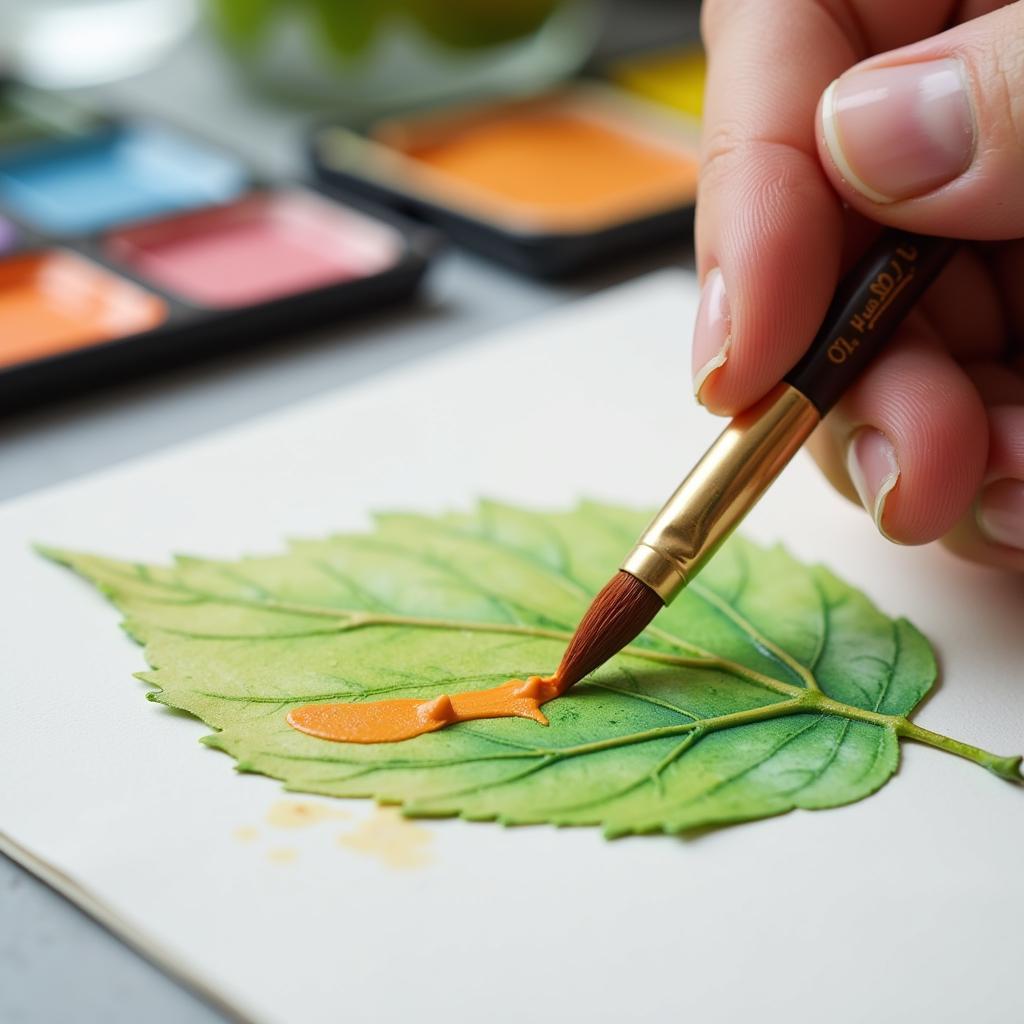Learning How To Color A Leaf opens up a world of artistic possibilities, whether you’re capturing the vibrant hues of autumn or exploring imaginative color palettes. From traditional techniques to modern methods, there are diverse approaches to bring your leaf art to life.
Is a leaf changing color a chemical or physical change Let’s delve into the fascinating ways you can add color to a leaf, transforming it into a unique piece of art.
Understanding the Canvas: Leaf Characteristics
Before diving into how to color a leaf, it’s important to understand the nature of your canvas. Leaves, in their natural state, already possess a captivating spectrum of colors, from the vibrant greens of summer to the rich reds and golds of autumn. This natural coloration is due to pigments like chlorophyll, carotenoids, and anthocyanins. Knowing how these pigments interact with different coloring methods can greatly influence your final result. Are you working with a freshly picked, green leaf or a dried, preserved one? The texture and moisture content will impact how the color adheres and spreads.
Traditional Techniques for Coloring a Leaf
Traditional methods offer a timeless charm and allow for a hands-on approach to coloring leaves. Watercolors, for example, provide a delicate, translucent wash of color, allowing the natural veins and textures of the leaf to show through. For a more opaque and vibrant effect, acrylic paints are a great option. These paints dry quickly and can be layered to create depth and dimension.
 Watercolor Painting on Leaves
Watercolor Painting on Leaves
Modern Methods: Exploring New Possibilities
Beyond traditional methods, there are several modern techniques you can explore. Fabric dyes can create intense, long-lasting color on leaves, especially those that have been treated or preserved. Markers, particularly those designed for porous surfaces, offer a convenient way to add details and intricate patterns.
How to Color a Leaf with Pressed Flowers
Creating art with pressed flowers and leaves is a beautiful way to preserve nature’s fleeting beauty. Start by carefully pressing and drying your leaves. Once dried, you can arrange them on paper or card stock and use a spray adhesive to fix them in place. Then, you can add color using colored pencils, markers, or even by carefully applying diluted acrylic paints with a fine brush. This method allows you to create stunning botanical compositions and personalized greeting cards.
Creating Patterns and Designs
Why do you see the green color on a leaf Adding patterns and designs elevates your leaf art to a new level of creativity. Use stencils and masking tape to create geometric shapes and patterns before applying color. Freehand drawing with fine-tipped markers or paint pens allows for intricate details and personalized designs. Consider the natural shape and veins of the leaf as inspiration for your artwork.
Tips for Preserving Your Colored Leaves
Once you’ve finished coloring your leaves, you’ll want to preserve your artwork. A clear acrylic sealant can protect the colors from fading and add a glossy finish. Alternatively, you can laminate your leaves to create durable bookmarks or decorative pieces. Properly storing your artwork away from direct sunlight and moisture will help maintain its vibrancy for years to come.
Conclusion
What colors do chlorophyll absorb? Learning how to color a leaf is a journey of exploration and creativity. Whether you choose traditional techniques or modern methods, the possibilities are endless. From capturing the vibrant hues of nature to creating whimsical designs, let your imagination guide you as you transform ordinary leaves into extraordinary works of art.
FAQ
- What type of paint is best for coloring leaves?
- Can I use food coloring to color leaves?
- How do I preserve colored leaves?
- What are some creative ways to use colored leaves?
- Where can I find inspiration for leaf art designs?
- What kind of leaves are best for coloring?
- How do I prepare leaves for coloring?
Common Scenarios and Questions:
- Scenario: The color doesn’t adhere well to the leaf. Possible Solution: The leaf may be too moist. Try drying it further before applying color.
- Scenario: The color bleeds or spreads unevenly. Possible Solution: Use a sealant or fixative before applying color to create a more stable surface.
- Scenario: I want to create a metallic effect on my leaves. Possible Solution: Use metallic paints or markers designed for porous surfaces.
Further Exploration
For more information on leaf color changes, you can check out when do leaves change color in kentucky.
Contact Us
Need assistance with your color project? Contact us! Phone: 0373298888, Email: [email protected] or visit us at 86 Cau Giay, Hanoi. Our customer service team is available 24/7.
